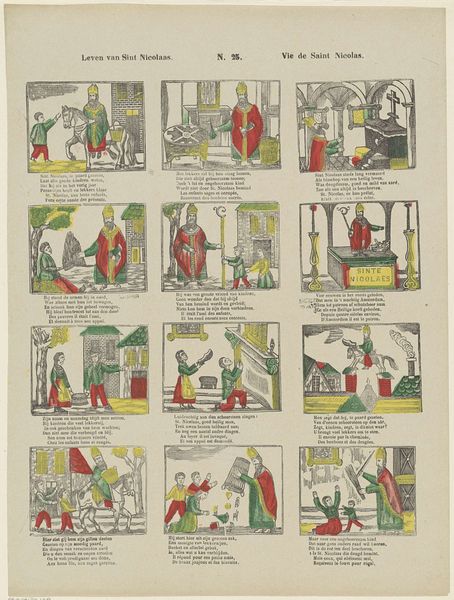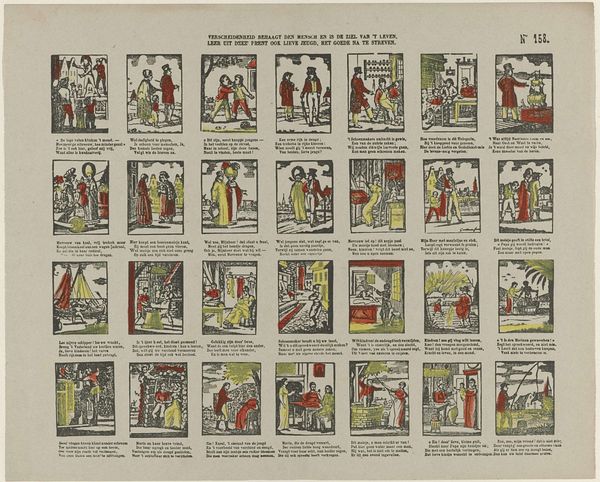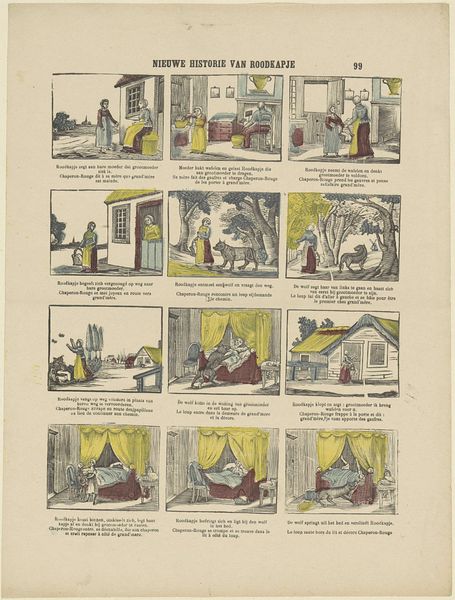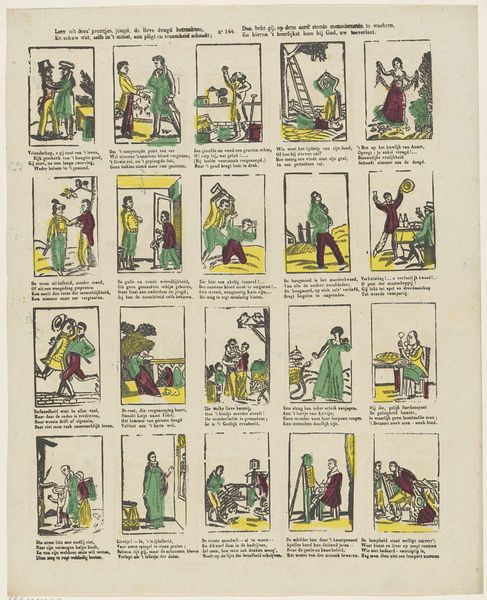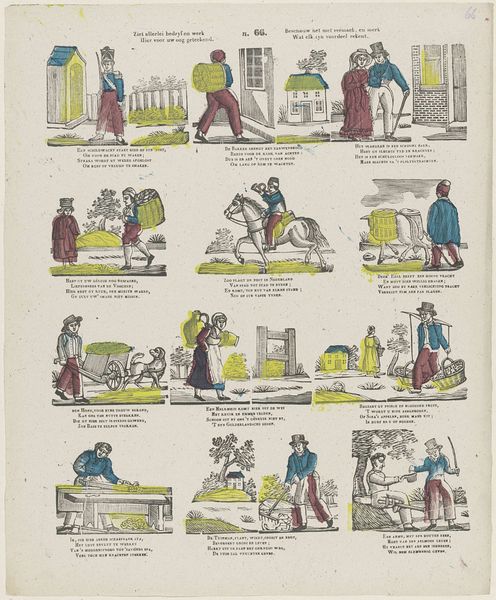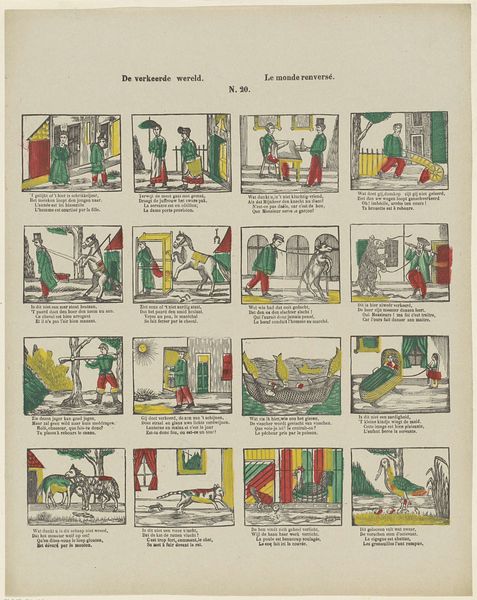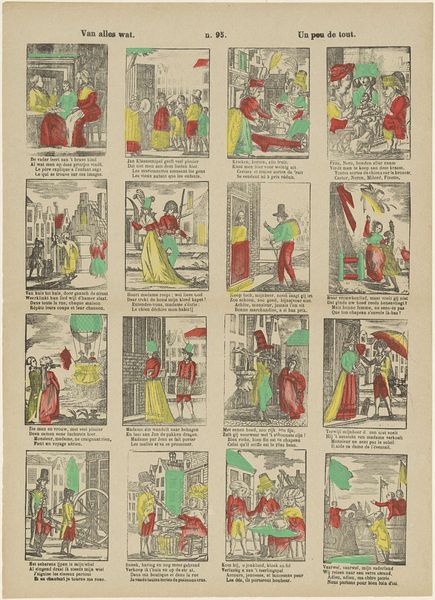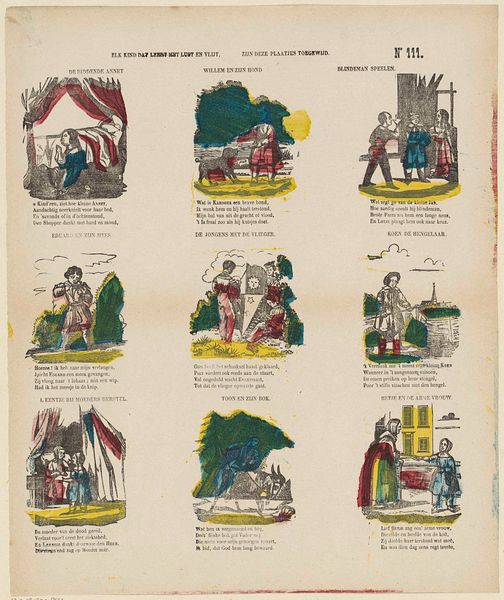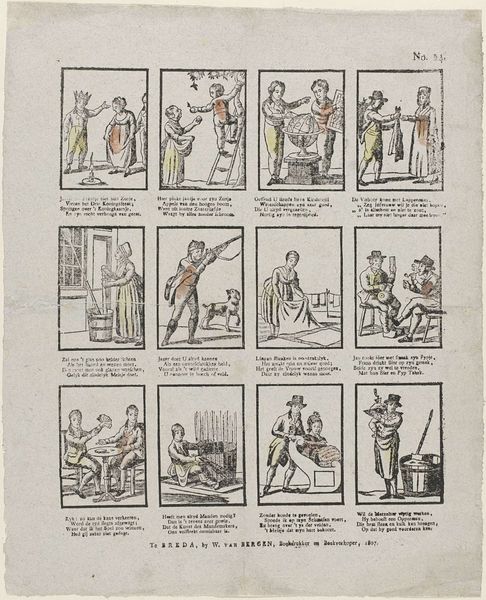
Komt kind'ren gaat ge meê, mijn buitenplaats eens zien, / Ik zal zooveel ik kan, genoegens u daar biên / Er is daar veel te zien in allerhande zaken, / Kom jongens kom ga meê ge zult u wel vermaken 1827 - 1894
0:00
0:00
print, etching
#
narrative-art
#
dutch-golden-age
# print
#
etching
#
old engraving style
#
genre-painting
Dimensions: height 402 mm, width 315 mm
Copyright: Rijks Museum: Open Domain
Curator: At first glance, I'm struck by the dreamlike quality of these scenes—a sequence of carefully composed tableaux bathed in soft light. What's your impression? Editor: Well, stepping back, it certainly has a quaint charm about it, almost like pages from a children’s book, but there’s also a rather formal rigidity in the composition, wouldn't you say? Curator: Indeed. This print, created by A. Robyn sometime between 1827 and 1894, and now held in the Rijksmuseum collection, is an etching intended as narrative art. Each frame attempts to invite you to visit a specific type of recreational attraction or engage in activities associated with the Dutch Golden Age of enjoyment. Editor: That's interesting, I find my eye drawn to repeated elements across each little scene. The recurring figure dressed in what appears to be somewhat archaic costume reminds me a bit of the ‘everyman’ figure you find populating morality plays of the era, acting as guide. Then you've got this radiant red and gold which appears, perhaps symbolizing earthly pleasures? Curator: A compelling interpretation. I would like to add that these colored schemes reflect a rising sense of nationalism throughout the Netherlands during the 19th Century, which began to reimagine earlier moments of prosperity with a degree of cultural mythologizing. Note that while many prints such as these may allude to genre painting, in their very method of production they enabled wider access and more egalitarian ways of experiencing and consuming imagery across the broader Dutch society. Editor: It’s a delightful convergence of the moral and the material. As an Iconographer, I love how accessible it is, not weighed down with artifice but brightened by this optimism through accessible design. Curator: It certainly is. Its lasting appeal underscores how historical visual culture connects to deeply ingrained ideals of community and progress in the Dutch identity. Editor: And perhaps it reflects that even today we can connect with art from earlier eras—still speaking volumes without pretense and flourish, but also echoing these ideas around leisure or labor with different weights and connotations.
Comments
No comments
Be the first to comment and join the conversation on the ultimate creative platform.
